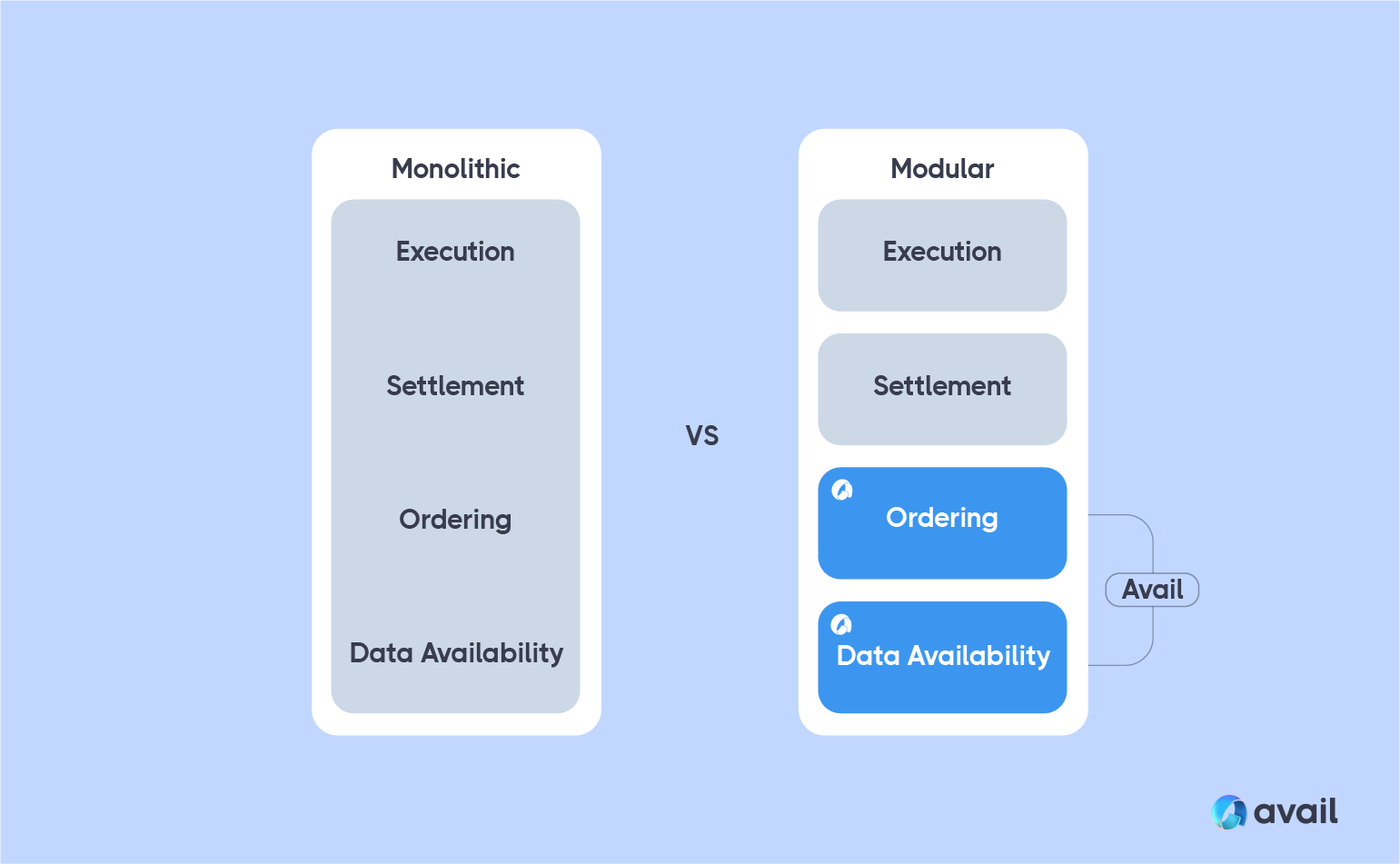Funding of $27 million, an overview of Avail's data availability vision
Written by: angelilu, Foresight News
The Polygon modular blockchain project Avail announced today (February 26) that it has completed a $27 million seed round of financing, led by Founders Fund and Dragonfly. The funding will be used to develop three core products: its data availability solution (DA), Nexus, and Fusion.
Polygon was initially co-founded in 2017 by three co-founders, but in March of this year, co-founder Anurag Arjun announced his departure, stating that he would lead his team to fully focus on another new project.
That new project is Avail, which acts like a huge Layer 2 aggregator. Over the years, its team has explored various scaling directions internally, and in 2020, it initiated research on the modular blockchain project Avail. Perhaps Polygon wants to focus on its own development, or perhaps Avail has sufficient potential. Since March of this year, Avail has spun off from Polygon and is operating as an independent entity.
Since the spin-off, Avail launched a three-month Kate testnet in June, launched a "Data Attestation Bridge," and collaborated with Equilibrium Group to open-source a new prototype of the Optimism EVM (OpEVM) software development kit (SDK). Avail claims that the Kate testnet is expected to end in October, and the next important progress will be the launch of an incentivized testnet, with the mainnet expected to go live in Q4 2023 or Q1 2024.
Difference Between Avail and Monolithic Blockchains
So what exactly is it that led Polygon co-founder Anurag Arjun to choose to "go solo" with Avail? And what is its purpose?
Ultimately, Avail is still addressing the scalability issues of monolithic blockchains like Ethereum. Initially, it might have been referred to as L3 or off-chain scaling solutions or something else, but now Avail has found a more suitable descriptor—modular blockchain.
The core components of blockchain technology include consensus layer/execution layer, settlement layer, and data availability layer. In traditional monolithic blockchain architectures like Ethereum and Solana, all these tasks are performed independently by a single system, which limits scalability. The design philosophy of modular blockchains is to split these core functions into multiple modules, each of which can be executed by specialized providers, thus achieving greater customization and scalability.

Modular Blockchain Focused on Data Availability Layer
Avail is a provider that focuses solely on the data availability layer (Data Availability Layer).
Avail can efficiently sort and record transactions, provide data storage and data availability verification, support Ethereum Virtual Machine (EVM)-compatible blockchains, and allow Rollups to publish data directly to Avail. Its light client network verification mechanism (which will be introduced later) enables Rollups on Avail to verify state without relying on smart contracts and the base layer. Moreover, due to its modular nature, developers can store data on Avail and choose other networks for settlement.

Design of Avail
Unlike other teams like Ethereum that attempt to enhance the data availability capabilities of existing blockchains, Avail is building a scalable data availability solution from scratch. The following will explore Avail's design from several aspects, including consensus mechanism, decentralization, and validity proofs.
Consensus Mechanism
Different blockchains choose different security mechanisms based on their needs after balancing liveness and security. Avail takes a "middle path," using the BABE and GRANDPA consensus mechanisms inherited from the Polkadot SDK. BABE acts as the block production engine and prioritizes liveness by coordinating with validator nodes to identify new block producers. GRANDPA serves as a finality gadget; once more than two-thirds of validators prove the chain containing the block, it can simultaneously finalize all blocks leading to that specific block. This hybrid mechanism provides Avail with network resilience, allowing it to withstand temporary network partitions and large node failures.
Decentralization
In terms of decentralization, Avail adopts Polkadot's Nominated Proof of Stake (NPoS), supporting up to 1,000 validator nodes. NPoS also features effective reward distribution to reduce the risk of stake centralization.
Additionally, the node functionality settings of Avail provide it with a unique fault tolerance mechanism. The network architecture of monolithic blockchains consists of validator nodes, full nodes, and light clients, which can be seen as playing the roles of craftsmen, quality inspectors, and consumers, respectively. Avail grants the quality inspection rights of full nodes to light clients, which use Data Availability Sampling (DAS) methods for verification. Data Availability Sampling is the process by which light clients request small random portions of each block, capable of achieving security guarantees equivalent to traditional full nodes. In Avail's design, full nodes still exist but are almost viewed as backup tools to maintain high redundancy of data on the network. This design allows Avail to avoid relying on full nodes to obtain data during network interruptions or bottlenecks, thus preventing the risk of collusion among full nodes.
Validity Proofs
When discussing modularity, one cannot overlook the recent surge in popularity of Celestia due to its token launch. There was even a small misunderstanding between Avail and Celestia. In June 2021, when Polygon just deployed Avail, Celestia co-founder Mustafa Al-Bassam wrote that Avail's introduction almost verbatim copied his 2019 blog introducing Celestia. Setting aside the plagiarism issue, more teams entering the data availability space is welcomed. In response, Polygon co-founder MihailoBjelic apologized to Celestia and its community for the marketing and content team's oversight.
Although both have many similarities in the data availability layer, Avail differs from Celestia in terms of validity proofs. Avail uses KZG polynomial commitments, which reduce memory, bandwidth, and storage requirements while providing simplicity. The combination of KZG commitments with Avail's light clients accelerates the verification process on Avail. In contrast, Celestia uses fraud proof technology, which is much faster than generating KZG commitments. However, due to the larger scale of its sampled data, it requires slightly higher communication bandwidth.
Avail's KZG polynomial commitment refers to the commitments generated by block producers when producing blocks, summarizing the data in an entire row of Avail blocks. During the verification phase, light clients view the commitments in the block header and verify the proofs of each unit based on the commitments, thus confirming the availability of all data in the block. This increases the data throughput on-chain and addresses performance bottlenecks.
Conclusion
In summary, although Avail is still some time away from launching its mainnet, as a modular data availability solution, it provides new thoughts and exploration directions for the development of blockchain technology. More and more industry participants are facing growth challenges due to limited block space and high costs, and this challenge will become increasingly severe in the future. A scalable data availability layer is crucial for effectively scaling blockchains, and where developers choose to build their projects will determine their competitive advantage in the coming years.









